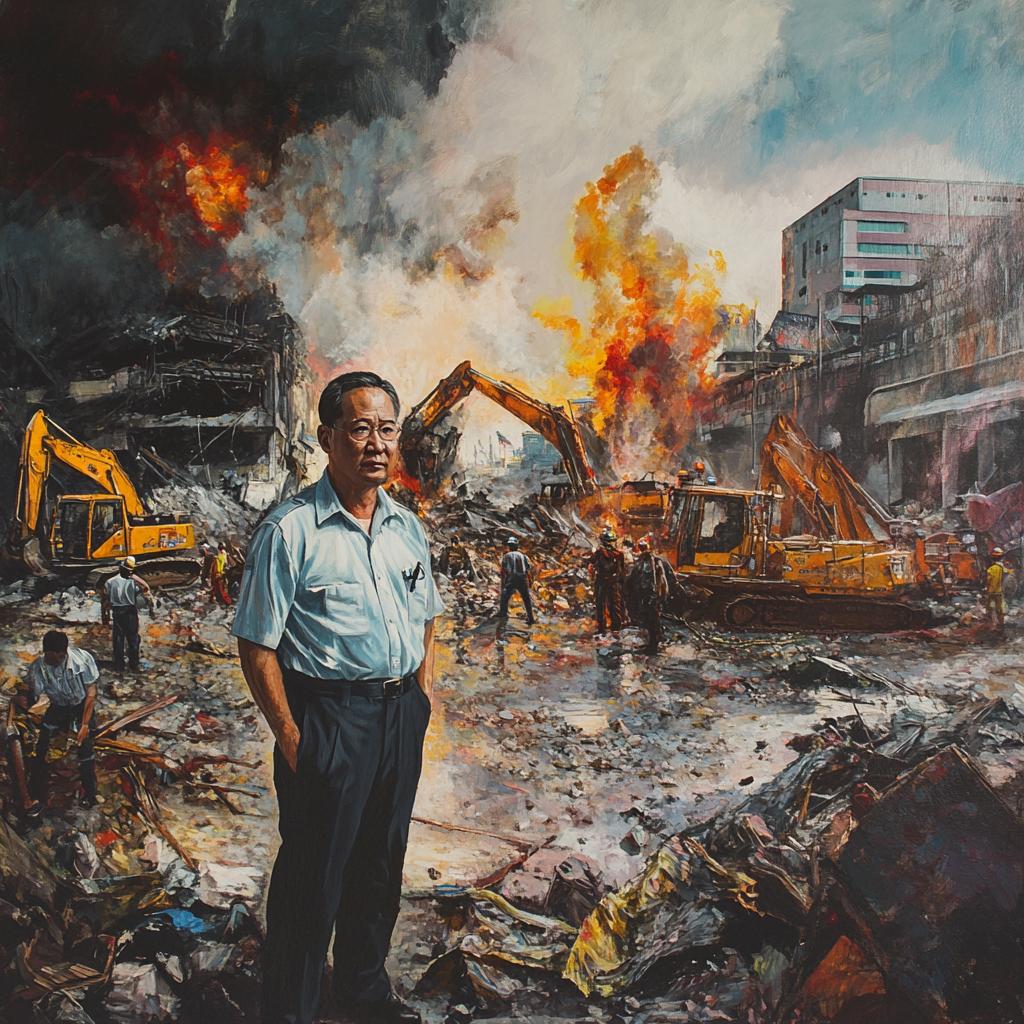Speaking on the “Kammakorn Khao, Kui Nork Jor” (Workers’ News, Off-Screen Chat) programme, Mr. Chadchart opened up about the formidable challenges his team is facing, acknowledging Thailand’s uncharted territory in dealing with such a colossal disaster. “In the past, we’ve never encountered anything of this scale,” he admitted, taking a moment to absorb the gravity of the situation.
Amidst the chaos, he resonated with concerns about the varied opinions on how best to tackle the calamity. “Different views are part of the package when dealing with complexity,” Chadchart asserted, understanding that not everyone orchestrating the efforts has an immediate grasp of the shifting dynamics on the ground. “Our ultimate priority is centered around the hope that survivors are still out there,” he said with determination.
The initial thrust of the rescue efforts conformed to the standard 72-hour guideline. Mr. Chadchart underscored that miracles beyond this timeframe are indeed possible, pointing out numerous instances where individuals have been rescued five or even six days later against all odds.
“Our focus in the first days was relentless searching, despite the obstacles that debris presented,” Chadchart explained. “We then transitioned into carefully removing debris to carve access points. If survivors don’t emerge, we will bring in the big guns—literally. Heavy machinery has its dangers, especially with the risk of further collapse, which could jeopardize potential survivors. This delicate dance is being choreographed with meticulous precision, in consultation with international experts who’ve undergone specialized training. We’re acutely aware of public anxiety and embrace criticism as a catalyst to enhance our response.”
With today’s sunset penciled in as the switch point, more robust equipment will take the stage to embolden the rescue and recovery strategy. The plan is a daring tango of demolition and vigilance in monitoring for survivors.
Chadchart reflected on his boots-on-the-ground presence, noting: “Being here offers me the perspective I need. While I’m not the technical guru, it doesn’t hurt to witness firsthand the operational symphony—the equipment, the choreographed teamwork. We face logistical hurdles, such as language barriers with our incredible international collaborators. While interpreters play a crucial role, climbing alongside rescue teams sometimes falls outside their skill set. These are lessons we’re etching into our playbook for the future.”
The Governor didn’t waver in reiterating Bangkok Metropolitan Administration’s (BMA) relentless pursuit of all pathways in the quest for survivors, while acknowledging the inevitable necessity to segue into a more strategic recovery phase. “Rest assured, no stone will remain unturned in our quest to find and rescue everyone we can,” he vowed.


















I think Governor Chadchart is doing a commendable job given the circumstances. He’s showing real leadership by being on the ground.
But is his presence really helping, or is it just political theater?
I believe it boosts morale. Seeing the leader in action can inspire the teams and reassure the public.
Exactly! Also, being there gives him a better understanding of the situation than sitting behind a desk.
Bringing in heavy machinery sounds risky to me. Couldn’t that cause more harm than good?
Every rescue operation has its risks, and it’s a calculated decision. They have international experts guiding them.
I just hope they aren’t making decisions too hastily… lives are at stake!
The situation is urgent, and they need to act fast. Hesitation could cost lives too.
That’s true, but haste shouldn’t compromise safety. It’s a tough balance.
The language barrier with international teams is concerning.
I would have thought they’d have better preparations for that. It seems like a basic requirement in a crisis.
Exactly, especially when every second counts in a rescue mission.
Different views on tackling the disaster are necessary. It’s called brainstorming, people!
He’s right that criticism helps improve the response. Flexibility and learning on the go are vital.
I’ve heard of people surviving for over a week trapped. So there’s hope if they move quickly.
Moving from rescue to recovery must be heart-wrenching. How do teams decide when to shift?
It probably depends on the situation. But yes, it’s a tough call to make.
Is it just me, or are people too quick to criticize without understanding the complexities involved?
I agree with you, Izzy. It’s easy to judge from the sidelines.
We need more global collaboration in crises like these. The world has to act as one community.
That’s easier said than done. National interests often get in the way, unfortunately.
It’s a shame that disasters have to happen for us to realize our preparedness gaps.
Hopefully, each disaster is a lesson learned so it doesn’t repeat. A future without mistakes is the goal.
Does anyone else feel like this effort might be wasted if they don’t give up soon?
Hard to say. Hope keeps people going, but resources aren’t infinite.
I think Chadchart’s perspective is valuable. An eyewitness can spark different strategies.
Yeah, sometimes the best solutions come from unconventional places or perspectives.
They better have a backup plan if things worsen. Contingency planning is crucial.
I’m in awe of rescue workers. Truly heroes in such trying times.
I’d be interested to know more about the training these international experts have.
Good point, Bethany! Specialized training can be what differentiates success from failure in these situations.